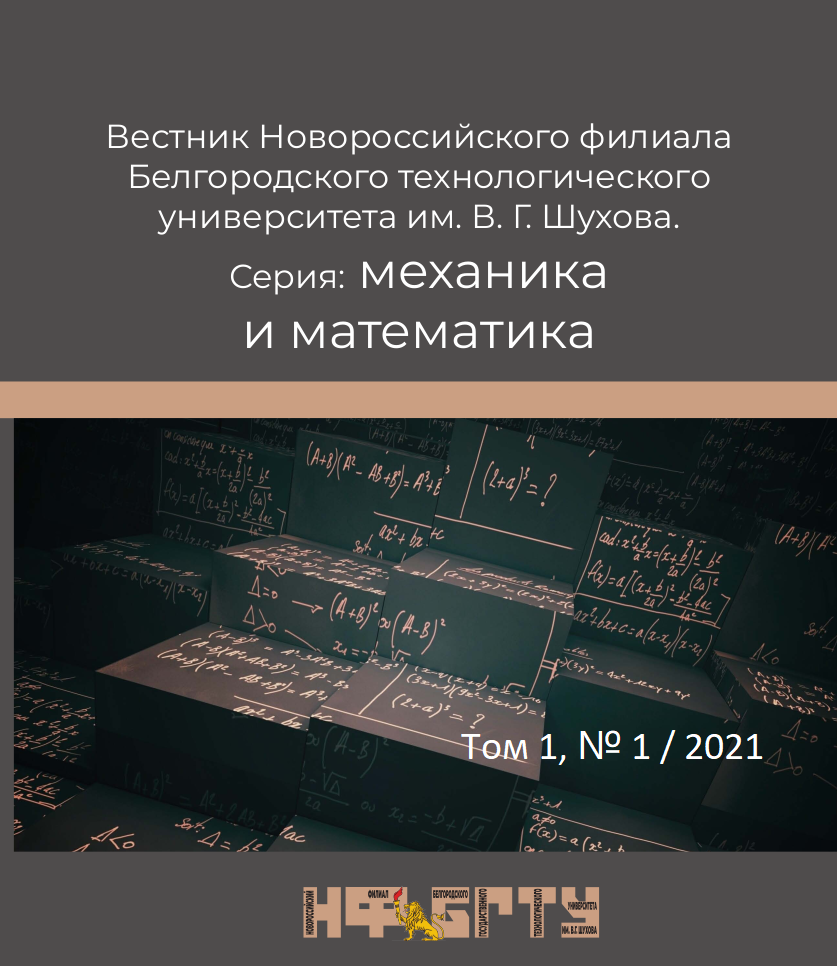Method for calculating the stress-strain state of anisotropic bodies of arbitrary shap
Keywords:
boundary value elasticity problem, Green tensor, Lame operator, multiple Fourier transform, support vector function, convolution theoremAbstract
A calculation method for the stress-strain state of a homogeneous anisotropic body of arbitrary shape bounded by a piecewise smooth surface is proposed. The behavior of the body is described by the problem of the anisotropic theory of elasticity. The concept of a basic solution of the Lame operator is introduced, which is similar to the fundamental solution of the theory of generalized functions and the singular solution of equations of mathematical physics. It is proved that the basic solution depends on difference of arguments. It is shown how the Green tensor of the original problem is constructed by using a basic solution, multiple Fourier transform, finite volume convolution, and surface and support vectors convolution theorems – functions chosen appropriately, bypassing the solution of the original elasticity problem. The proposed method allows obtaining an analytical solution to the considered problem of the anisotropic theory of elasticity for an arbitrary-shaped body and to determine the desired components of the displacement vector as a function of the coordinates of the body point for the three main problems of elasticity theory. These are the problem with the displacements specified on the surface of the deformable body, the problem with the forces specified on the surface and the problem with the displacements specified on one part of the surface, and the forces on the other part of the surface. As an example of using the proposed method, the problem of the deformation of an anisotropic square plate with a displaced circular hole is solved. In the numerical implementation of the method using the Mathcad software, instead of the multiple Fourier transform, the multiple discrete Fourier transform was used. The number of break points during discretization was assumed to be thirty. The solution obtained by the method described in the work was compared with the known solution of the problem, and it was found that the graphs of the known solution and the solution obtained by the proposed method coincide.
References
Колмогоров А. Н., Фомин С. В. Элементы теории функций и функционального анализа. М.: Наука, 1981. 543 с.
Колтунов М. А., Кравчук А. С., Майборода В. А. Прикладная механика деформируемого твёрдого тела. М.: Высшая школа, 1983. 352 с.
Купрадзе В. Д., Гегелиа Т. Г., Башелейшвили М. О., Бурчуладзе Г. В. Трёхмерные задачи математической теории упругости и термоупругости. М.: Наука, 1976. 662 с.
Горлач Б. А., Ермоленко Г. Ю. Метод опорных функций для решения задач математики и механики // Вестн. Сам. гос. техн. ун-та. Сер. Физ.-мат. науки, 2004. Т. 26. С. 122–126. doi: doi.org/10.14498/vsgtu188.

Downloads
Published
How to Cite
Issue
Section
License
Copyright (c) 2021 Вестник Новороссийского филиала Белгородского государственного технологического универсВестник Новороссийского филиала Белгородского государственного технологического университета им. В. Г. Шухова. Серия: механика и математикатета им. В. Г. Шухова. Серия: механика и математика

This work is licensed under a Creative Commons Attribution-NonCommercial-NoDerivatives 4.0 International License.
Copyright information
Тексты данной электронной статьи защищены (cc) Creative Commons Attribution-NonCommercial-NoDerivs 3.0 Unported License.
Вы можете свободно:
Делиться (You are free: to Share) – копировать, распространять и передавать другим лицам данную электронную книгу при обязательном соблюдении следующих условий:
– Атрибуция (Attribution) – Вы должны атрибутировать произведения (указывать автора и источник) в порядке, предусмотренном автором или лицензиаром (но только так, чтобы никоим образом не подразумевалось, что они поддерживают вас или использование вами данного произведения).
– Некоммерческое использование (Noncommercial use) – Вы не можете использовать эти произведения в коммерческих целях.
– Без производных произведений – Вы не можете изменять, преобразовывать или брать за основу эту электронную книгу или отдельные произведения.
Licensed under the Creative Commons Attribution-NonCommercial-NoDerivs 3.0 Unported License.
To view a copy of this license, visit http://creativecommons.org/licenses/by-nc-nd/4.0/
or send a letter to Creative Commons, 444 Castro Street, Suite 900, Mountain View, California, 94041, USA.
You are free:
to Share — to copy, distribute and transmit the work
Under the following conditions:
Attribution — You must attribute the work in the manner specified by the author or licensor (but not in any way that suggests that they endorse you or your use of the work).
Non-commercial — You may not use this work for commercial purposes.
No Derivative Works — You may not alter, transform, or build upon this work.
Any of the above conditions can be waived if you get permission from the copyright holder.




